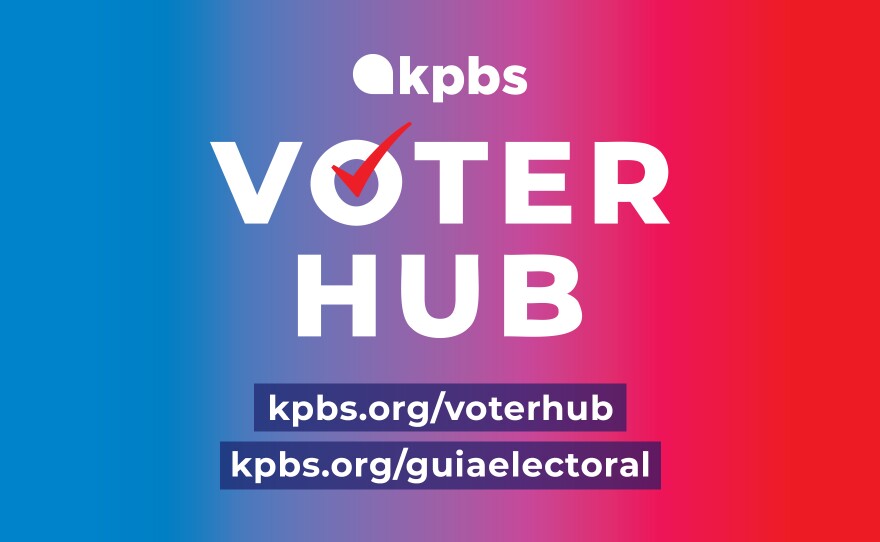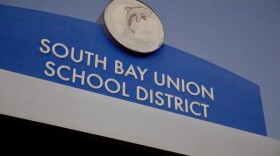Measure G: County of San Diego - sales tax
What would Measure G do?
Measure G would raise the sales tax rate across San Diego County by a half percentage point to pay for transportation infrastructure. It does not include a sunset clause, meaning it would remain in effect until ended by voters.
If Measure G passes, a $100 restaurant bill would come with an additional $0.50 in sales tax. Purchasing a $10,000 car would come with an additional $50 in sales tax. The exact sales tax rate you pay would vary depending on the city where the purchase is made.
California exempts certain essential products from sales tax — namely groceries, diapers, menstrual products and prescription drugs. These products would not cost more if Measure G passes.
Measure G includes an expenditure plan that breaks down as follows:
- 50% on public transit infrastructure, including stabilization of the coastal rail corridor, a rail connection to San Diego International Airport, a rail line from South County to Kearny Mesa, new rapid bus routes and safety upgrades at transit stops
- 27% on road and highway projects, including fire evacuation routes, bridge safety repairs, highway maintenance projects, HOV lanes and electric vehicle charging stations
- 7% on local streets and roads, including repaving streets, filling potholes and repairing storm drains
- 12% on public transit operations, including increased bus and rail frequencies and low or free transit fares for seniors, youth and disabled veterans
- 2% on repairing or replacing rail transit infrastructure
- No more than 2% on administration costs
Measure G would also establish an independent Taxpayer Oversight Committee made up of industry professionals that would perform annual audits to verify the measure is being implemented as promised.
Measure G does not stipulate a timeline for the projects it would fund. Those decisions would be made by the mayors, city councilmembers and county supervisors that make up the board of directors at SANDAG, the county's transportation planning agency.
Why is it on the ballot?
Measure G is a citizens initiative, meaning it was placed on the ballot via a signature gathering campaign. That campaign is made up of mostly environmental groups and labor unions.
There is general agreement among most conservatives and liberals that San Diego County needs more funding for transportation infrastructure. There is disagreement over how much funding should go toward public transit versus freeways.
In 2016, 58% percent of county voters approved of another half-cent sales tax measure that gave more funding to freeways and less to public transit. The measure did not pass because it was proposed by a government agency and required a two-thirds majority.
Because Measure G is a citizens initiative, it requires only a simple majority to pass.
Who supports Measure G?
Measure G supporters say more funding for transportation infrastructure is necessary to keep San Diegans mobile as the region grows, and to prevent Los Angeles-style smog and gridlock. They say San Diego County has historically invested very little in public transit, and that more bus and rail services will improve air quality and give people more viable alternatives to driving.
Most cities in San Diego County, as well as the state of California, have pledged to dramatically reduce greenhouse gas emissions. Most of those emissions come from cars and trucks. Supporters of Measure G say it will be impossible to achieve local and state climate goals without significant investment in more sustainable transportation options.
Supporters also say Measure G will provide resources to every city in the county, create local construction jobs, improve bridge and highway safety, preserve open space and help facilitate faster evacuations from wildfires.
Supporters
- Associated General Contractors — San Diego Chapter
- San Diego County Democratic Party
- San Diego County Bicycle Coalition
- Climate Action Campaign
- San Diego Housing Federation
- San Diego and Imperial Counties Labor Council
- American Lung Association
- Congressman Scott Peters
- San Diego City Council President Sean Elo-Rivera
- San Diego County Supervisor Nora Vargas
Who opposes Measure G?
Opponents of Measure G argue that San Diego County voters pay enough in taxes and that a higher sales tax rate will increase the cost of living. Some opponents have supported sales tax increases in the past but argue Measure G's expenditure plan does not match the needs of most county residents because it gives too much to public transit and not enough to highway expansions.
Opponents also argue SANDAG, the countywide transportation agency that would be executing most of Measure G's projects, cannot be trusted. The agency has weathered scandals in the past, most notably in 2016 when the agency overpromised how much revenue would be raised by another sales tax measure. More recently, SANDAG acknowledged deep flaws in its toll collection system on State Route 125, which the agency says it is fixing.
Decades of research show adding lanes to highways does not relieve traffic congestion but does put more cars on the road.
Opponents
- San Diego County Republican Party
- San Diego Tax Fighters
- San Diego County Taxpayers Association
- Reform California
- San Diego County Supervisor Jim Desmond
- Chula Vista Mayor John McCann
- Escondido Mayor Dane White
- El Cajon Mayor Bill Wells
- Vista Mayor John Franklin
- San Marcos Mayor Rebecca Jones
Explore your virtual ballot
We teamed up with Ballot Ready to offer in-depth information about what's on your ballot with this interactive guide!
- Use your address to get a personalized ballot
- Get info on candidates, measures, and who supports them
- Keep track of your choices and use them to vote







